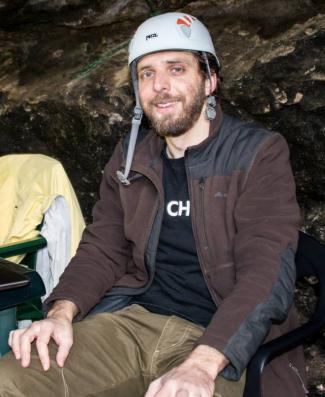
CU Anschutz Medical Campus
Aurora, CO 80045
Office Hours:
By Appointment
As a paleoanthropologist and comparative anatomist, I am interested in understanding the adaptations and phylogenetic relationships of our early ancestors and the sequence, timing and causes of the major events in human biological and cultural evolution. In particular, habitual bipedality and the intensification of tool behaviors represent two of the key adaptive signatures of the human lineage, and explaining their origins has long been a focus of inquiry in anthropology. The evolutionary histories of these adaptations are intertwined due to the emancipation of the forelimb granted by upright posture; thus, I have focused most of my attention on the morphology of the hands and feet in humans and nonhuman primates and fossil hominins (early human ancestors). Understanding the evolutionary transformation of the postcranial skeleton in the human lineage requires 1) reconstructing the mode of locomotion that preceded the origins of bipedality; 2) revealing constraints imposed by that ancestral condition; and 3) identifying subsequent morphological changes and their functional significance for novel behaviors (e.g., tool making and use). Most of my research tackles various aspects of this agenda.
In the lab, I address these questions through traditional anatomical study of bones, fossils, and cadaveric material coupled with quantitative bioengineering and computer science approaches. These methods include computed-tomography-based analysis of joint kinematics, surface laser scanning and three-dimensional morphometrics, electromyography, measurement of muscle moment arms, and broad-based comparative studies of primates and nonprimate mammals.
Another aspect of my work involves the recovery and description of new paleontological and archaeological material relating to human origins. Most recently, our international collaborative team has been excavating a new late Pleistocene site in northern Italy that we expect will provide important information about how modern Homo sapiens came to replace archaic hominin populations (e.g., Neanderthals) by approximately 40,000 years ago. Previously, fieldwork and/or study of museum fossil collections has taken me to Bulgaria, Ethiopia, Kenya, South Africa, France, Spain, and southwestern Wyoming, to work in early and late time periods of human evolution.
I teach human gross anatomy in the Master of Science Program in Modern Human Anatomy and in the professional health science programs (School of Medicine and School of Dental Medicine) at CU Anschutz. I am happy to advise anthropology graduate and undergraduate students with interests in paleoanthropology and primate comparative morphology.
